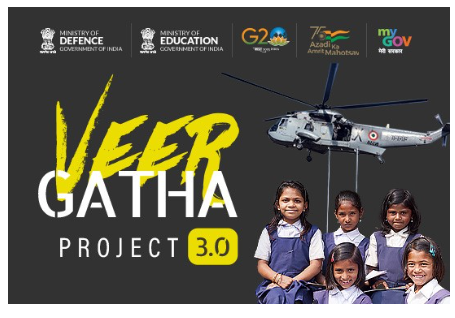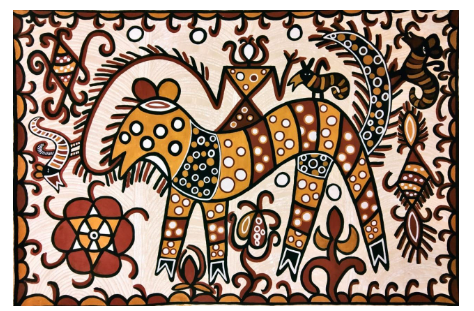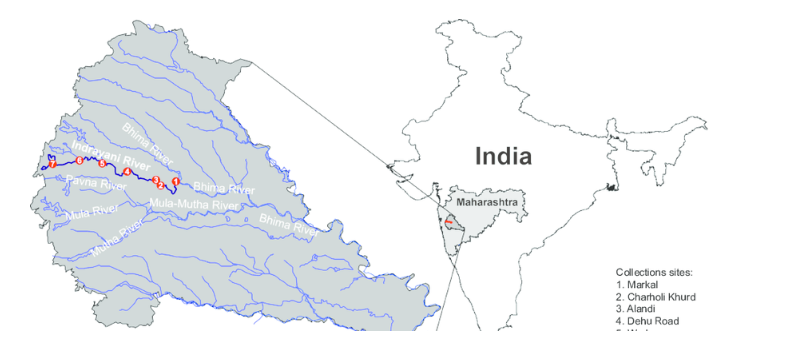Monday, 8th January 2024
Peace Pact with ULFA
In News: Recently, the pro-talks faction of the United Liberation Front of Assam (ULFA) entered into a tripartite peace agreement with the Central government and the government of Assam.
Major Provisions of Peace Accord with ULFA
Context and Historical Background
- Historical Context
- Since the 19th century, the cultural richness of Assam has encountered challenges due to an influx of migrants attracted by its flourishing tea, coal, and oil industries.
- This inflow, exacerbated by Partition and subsequent refugees from East Pakistan, heightened insecurity among the native population.
- The competition for resources led to a six-year mass movement, culminating in the 1985 Assam Accord, aimed at addressing the issue of foreigners in the state.
- Origins of ULFA
- Formed in 1979, ULFA advocated for an independent Assam through armed struggle against the Indian state.
- Over a decade, ULFA recruited and trained members in Myanmar, China, and Pakistan, employing abductions and executions to establish a sovereign Assam.
- In 1990, the government's Operation Bajrang resulted in the capture of a significant number of ULFA rebels. Assam was declared a 'disturbed area,' leading to the imposition of President's rule and the invocation of the Armed Forces Special Powers Act (AFSPA).
- Extended Peace Negotiations
- Negotiations between ULFA, the Indian government, and the Assam state government commenced in 2011.
Recent Accord's Key Terms
- ULFA Commitments
- Abandon violence and disband their organization.
- Participate in the democratic process.
- Surrender weapons and camps.
- Government Commitments
- Address ULFA's concerns regarding Assamese identity, culture, and land rights.
- Invest ₹1.5 lakh crore for Assam's comprehensive development.
- Apply principles from the 2023 delimitation exercise for future exercises in Assam.
- Legislative Safeguards: The accord aims to limit the representation of non-indigenous communities in the Assam Assembly and seeks exemptions from specific sections of the Citizenship Act of 1955.
Enhancing the Recent Peace Accord
- Transparency and Accountability
- Establish mechanisms for transparent implementation of the accord’s provisions and hold responsible parties accountable for their commitments.
- Engagement with Anti-Talks Faction
- Strategically engage with ULFA's anti-talks faction to work towards a unified resolution and broader acceptance of the peace accord.
- Legal Safeguards
- Ensure that legislative changes or reforms align with constitutional principles and protect the rights of all residents, preventing discrimination based on ethnicity or origin.
- International Cooperation
- Collaborate with neighbouring countries to prevent cross-border insurgencies and maintain regional stability.
- Long-Term Development Strategies
- Develop sustainable and detailed strategies beyond immediate investments to foster holistic growth in the region.
Conclusion
The recent peace accord with ULFA presents a significant opportunity for peace and development in Assam. However, addressing underlying grievances, promoting economic growth, and ensuring social integration are crucial for building lasting peace in the region.
Source: TH
AI in Cancer Detection
In News: With the rising cancer cases and a shortage of specialists, Mumbai's Tata Memorial Hospital, India's largest cancer hospital, is leveraging artificial intelligence.
Bio-Imaging Bank
- Objective
- The overarching objective is to establish a robust repository integrating radiology and pathology images, intricately linked with clinical information, outcome data, treatment specifics, and additional metadata.
- This initiative strategically aims at creating a resource for the training, validation, and rigorous testing of AI algorithms.
- Operations
- In conjunction with the development of the database, the project entails the training and testing of multiple AI algorithms using the collected data.
- It will address crucial medical tasks such as screening for lymph node metastases, nucleus segmentation and classification, biomarker prediction, and therapy response prediction.
- Participating Institutions
- This multi-institutional project receives funding from the Department of Biotechnology, in collaboration with IIT-Bombay, RGCIRC-New Delhi, AIIMS-New Delhi, and PGIMER-Chandigarh.
Role of AI in Cancer Detection and Treatment
- Early Detection and Identification of Tissue Changes
- AI plays a pivotal role in early cancer detection by analysing radiological and pathological images.
- Through learning from extensive datasets, it identifies unique features associated with various cancers, facilitating the early detection of tissue changes and potential malignancies.
- Predictive Models for Tumour Survival and Treatment Guidance
- Comprehensive imaging generates longitudinal patient data, aiding in understanding behaviour, treatment response, disease recurrence, and overall survival.
- AI and machine learning protocols utilize this data to develop predictive models for tumour survival, guiding treatment aggressiveness and contributing to personalized care.
- Avoidance of Unnecessary Chemotherapy
- The creation of a tumour image bank allows the development of algorithms for different tumours, assessing treatment responses directly from images.
- This helps in avoiding unnecessary chemotherapy for predicted non-responders.
- Reducing Radiation Exposure with Diagnostic Quality
- Tata Memorial Hospital has incorporated the data of 60,000 patients into the biobank over the past year.
- Using this data, AI successfully reduces radiation by enhancing images with AI algorithms.
- This ensures a significant decrease in radiation exposure to children while maintaining diagnostic quality without compromise.
- Potential to Reduce Cancer Fatalities
- AI is poised to play a transformative role in cancer treatment, especially in mitigating fatalities in rural India.
- Its potential lies in tailoring treatment approaches based on diverse patient profiles, optimizing therapy outcomes.
- AI swiftly detects cancer, eliminating the need for extensive tests and enabling even general practitioners to diagnose complex cancers, significantly enhancing precision in cancer solutions.
National Cancer Grid (NCG)
- The NCG, initiated in 2012 as a government of India project through the Department of Atomic Energy (DAE) and the Tata Memorial Centre, aims to create a network of cancer centres, research institutes, patient groups, and charitable institutions across India.
- The goal is to develop uniform standards of patient care, provide specialized training and education in oncology, and facilitate collaborative basic, translational, and clinical research in cancer.
- Today, the NCG has over 270 hospitals in its network across India.
Source: IE
Sustainable Agriculture
In News: The Indigenous Seed Festival in West Bengal highlighted farmers' commendable initiatives to preserve native seed varieties and share traditional knowledge.
About Sustainable Agriculture
- Sustainable agriculture is a comprehensive approach to farming and food production, aiming to fulfil current food and fibre needs while ensuring the long-term viability of agricultural systems.
- It focuses on preserving natural resources for future generations. The practices encompass Crop Switching, Organic Farming, Community Supporting Agriculture, and more, emphasizing environmental stewardship, economic profitability, and social equity.
Benefits of Sustainable Agriculture
- Environmental Conservation
- Utilizing practices that minimize impacts on ecosystems, soil, water, and biodiversity.
- Methods include reducing soil erosion, conserving water, and minimizing synthetic fertilizers and pesticides.
- Techniques like crop rotation, cover cropping, and agroforestry maintain soil fertility.
- Economic Viability
- Ensuring agricultural practices are economically feasible, allowing farmers to earn a fair income.
- Strategies involve enhancing productivity, reducing production costs, and creating markets for sustainably produced goods.
- Social Equity
- Fostering fair relationships among farmers, consumers, and stakeholders in the food system.
- Ensuring fair wages, supporting rural communities, and promoting access to healthy food for all.
- Resilience to Climate Change
- Building agricultural systems resilient to climate variability and change.
- Practices aim to adapt to changing climatic conditions, mitigate greenhouse gas emissions, and enhance overall climate resilience.
- Biodiversity Preservation
- Supporting diverse ecosystems and genetic diversity within crops and livestock.
- Preserving heirloom and indigenous crop varieties and promoting landscapes that support wildlife and pollinators.
Limitations of Sustainable Agriculture in India
- High Labor Demand
- Sustainable agriculture often requires more manual labour, increasing production costs.
- Time Consumption
- Implementation and results take more time compared to conventional agriculture.
- Limited Production Potential
- May not meet the growing demand for food in India, posing challenges to food security.
- High Capital Cost
- Requires substantial initial investment, which may be a barrier for small farmers.
- Storage and Marketing Challenges
- Faces issues with storage and marketing of perishable and heterogeneous products.
Sri Lankan Crisis and Government Initiatives
- Impact of Organic Farming Policy
- Sri Lankan crisis triggered by a shift to organic farming, causing a significant drop in rice yields.
- Recent Government Initiatives
- National Mission on Sustainable Agriculture
- Paramparagat Krishi Vikas Yojana (PKVY)
- Sub-mission on Agroforestry (SMAF)
- Rashtriya Krishi Vikas Yojana
- Mission Organic Value Chain Development for North Eastern Region (MOVCDNER)
Way Forward for Sustainable Agriculture
- Financial Incentives
- Provide direct payments, subsidies for organic inputs, and crop insurance to encourage sustainable practices.
- Research and Development
- Invest in sustainable agricultural technologies and practices through research and development.
- Extension Services
- Strengthen agricultural extension services to provide training and information on sustainable agriculture.
- Market Access Improvement
- Enhance market access for sustainably produced food through better infrastructure, marketing support, and consumer awareness.
- Addressing Land Fragmentation
- Tackle land fragmentation through consolidation programs and promote joint farming initiatives.
- Environmental Regulations
- Strengthen environmental regulations and their enforcement.
- Empowering Women
- Empower women in agriculture through land ownership rights, access to credit, and participation in decision-making processes.
|
UPSC Previous Year Questions Prelims (2016) Q. With reference to ‘Initiative for Nutritional Security through Intensive Millets Promotion’, which of the following statements is/are correct?
Select the correct answer using the code given below: (a) 1 only Ans: C Mains (2019) Q. How far is Integrated Farming System (IFS) helpful in sustaining agricultural production? |
Source: TH
Schedule M of the Drugs and Cosmetics Rules, 1945: Updated
In News: For strict regulation of pharmaceutical and biopharmaceutical products, the Union Health Ministry has issued updated regulations within Schedule M of the Drugs and Cosmetics Rules, 1945.
Good Manufacturing Practices (GMP) for Pharmaceutical Companies
Overview of GMP
- GMP serves as a system to ensure the consistent production and control of products according to quality standards.
- It aims to minimize risks in pharmaceutical production that cannot be eliminated through final product testing.
- The World Health Organization (WHO) provides comprehensive guidelines for GMP, with many countries formulating their own requirements based on WHO GMP.
- Regional groups like ASEAN and the EU harmonize their requirements through the Pharmaceutical Inspection Convention.
GMP for Pharmaceutical Companies in India
- GMP in India is mandatory, establishing quality in products through control on materials, methods, machines, processes, personnel, and facility/environment.
- Initially incorporated in Schedule M of the Drugs and Cosmetics Rules 1945 in 1988, the last amendment occurred in 2005.
- The recent amendment replaced 'GMP' with 'Good Manufacturing Practices and Requirements of Premises, Plant and Equipment for Pharmaceutical Products.'
Revised Schedule M of Drugs: Need and Changes Introduced
- To align with global standards, especially WHO's, and ensure globally acceptable drug quality, the Ministry revised Schedule M.
- The changes include the introduction of a Pharmaceutical Quality System (PQS), Quality Risk Management (QRM), Product Quality Review (PQR), Qualification and Validation of Equipment, and a Computerized Storage System for all drug products.
- The revised rules emphasize the responsibility of manufacturers for product quality, compliance with license requirements, and patient safety
Implementation of Revised Schedule M Rules
The implementation of the revised rules is based on company turnovers:
- Small and medium manufacturers (annual turnover less than ₹250 crore) must implement the rules within 12 months.
- Large manufacturers (annual turnover over ₹250 crore) are given six months for implementation.
Significance of Government's Revision of Schedule M
- This revision is a positive step for the Indian pharmaceutical sector, elevating and updating the quality standards of medicines.
- It reinforces the industry's reputation, improves patient outcomes, and ensures compliance with international quality standards.
- The focus on risk management, equipment qualification and validation, and self-inspection contributes significantly to the sector's advancement.
Source: TH
Project Veer Gatha
In News: The nationwide reception to the third instalment of Project 'Veer Gatha' during Republic Day celebrations has been exceptionally positive.

About Project Veer Gatha
- Initiative Overview
- Project 'Veer Gatha' is a collaborative effort between the Ministry of Defence and the Ministry of Education.
- Established under the Gallantry Awards Portal (GAP) in 2021, its primary goal is to share the narratives of gallantry awardees' courageous acts and life stories with students. The aim is to foster patriotism and instil civic values among the youth.
- Enhanced Objective
- Project Veer Gatha goes beyond this noble objective by offering a platform to school students to engage in creative projects and activities cantered around gallantry award winners.
- Students express their appreciation through various media such as art, poems, essays, and multimedia presentations.
- The Ministry of Defence and the Ministry of Education acknowledge and award the best projects at the national level.
Key Facts about Gallantry Awards
- Gallantry Awards, instituted by the Government of India, recognize acts of bravery and sacrifice by Armed Forces personnel and civilians.
- These awards are announced twice a year, on Republic Day and Independence Day.
- Post-independence, the Param Vir Chakra, Maha Vir Chakra, and Vir Chakra were instituted on January 26, 1950.
- Subsequently, on January 4, 1952, three more awards – Ashoka Chakra Class-I, Ashoka Chakra Class-II, and Ashoka Chakra Class-III – were introduced.
- These were later renamed as Ashoka Chakra, Kirti Chakra, and Shaurya Chakra, respectively, in January 1967.
- The order of precedence for these awards is Param Vir Chakra, Ashoka Chakra, Mahavir Chakra, Kirti Chakra, Vir Chakra, and Shaurya Chakra.
Source: PIB
Sohrai Painting
In News: A remote village in Bengal commenced their New Year by organizing a workshop focused on the ancient indigenous art of Sohrai Painting.

About Sohrai Painting
- Indigenous Mural Art
- Sohrai Painting is an indigenous mural art form deeply rooted in cultural traditions. The term 'Sohrai' derives from 'soro,' meaning 'to drive with a stick.'
- Historical Roots
- Dating back to the Meso-chalcolithic period (9000-5000 BC), this art form has ancient origins.
- The Isko rock shelter in Barkagaon, Hazaribagh, features rock paintings identical to traditional Sohrai art.
- Theme and Elements
- Themes in Sohrai Painting predominantly revolve around natural elements such as forests, rivers, and animals.
- Tribal (Adivasi) women create these paintings using natural substances like charcoal, clay, or soil.
- Primitive Beginnings
- The primitive manifestation of Sohrai art initially appeared as cave paintings, reflecting its historical evolution.
- Geographical Practice
- Primarily practiced by indigenous communities, Sohrai Painting finds expression in the states of Jharkhand, Bihar, Odisha, and West Bengal.
- The Hazaribagh region in Jharkhand has earned a Geographical Indication (GI) tag for this distinctive art form.
- Artistic Custodians
- Sohrai Painting is the artistic expression of women from tribes like Kurmi, Santal, Munda, Oraon, Agaria, and Ghatwal.
- Distinctive Features
- Renowned for vibrant colours, intricate patterns, and symbolic motifs, Sohrai paintings carry a unique visual identity.
- Sohrai Festival
- An annual Sohrai festival marks the harvesting season and the onset of winter, celebrating the rich cultural significance of the art form.
Source: TH
Cassava (tapioca)
In News: The ICAR-Central Tuber Crops Research Institute (CTCRI) has issued a cautionary advisory regarding the feeding of animals with cassava (tapioca).

About Tapioca Plant
- Cultivation Overview
- Tapioca is a significant horticulture crop extensively cultivated on nearly 3 lakh hectares in Tamil Nadu, yielding an annual production of 60 lakh tonnes.
- Global Importance
- Cultivated across tropical regions worldwide, the tapioca plant is valued for its tuberous roots.
- These roots serve as the source for various products, including cassava flour, bread, tapioca pearls, laundry starch, and an alcoholic beverage.
- Climatic Requirements
- Soil
- Flourishes in well-drained soil, preferably red lateritic loamy soil.
- Climate
- Thrives in a tropical, warm, and humid climate.
- Rainfall
- Requires well-distributed rainfall exceeding 100 cm annually.
- Elevation
- Can be cultivated up to an elevation of 1000 m.
- Soil
- Cyanogenic Glucosides (CNGs)
-
- All parts of the cassava or tapioca plant, including leaves, stem, tuber, and rind, contain cyanogenic glucosides (CNGs) like linamarin and lotaustralin.
- These compounds can be hydrolyzed by the endogenous enzyme linamarase to acetone cyanohydrin, which may spontaneously release free hydrogen cyanide.
- Both acetone cyanohydrin and free cyanide are toxic.
- Tapioca leaves contain approximately 10 times higher CNGs than the roots.
- Cyanogenic glucoside content in the rind is 10-30 times higher than in the edible parts.
- Risk of Cyanide Poisoning
- Feeding crushed peels or leaves immediately after crushing, or without proper drying, poses a high risk of cyanide poisoning in animals.
- Proper processing and precautions are essential to mitigate the toxic effects of cyanogenic glucosides in tapioca plants.
Source: TH
Indrayani River
In News: The recurrence of toxic foam on the Indrayani River has reignited concerns about pollution in the region.

Indrayani River Overview
- Geographical Setting
- Indrayani River is a tributary of the Bhima River, itself a significant contributor to the Krishna River.
- River Course
- Originating near Lonavla in Kurvande village amidst the Sahyadri mountains of Maharashtra, the river relies on rainfall for its flow.
- Progressing eastward, it meets the Bhima River, predominantly flowing to the north of Pune.
- Noteworthy religious towns like Alandi and Dehu grace the riverbanks. Dehu is renowned as the hometown of Saint Tukaram, while Alandi hosts the samadhi of the poet Dnyaneshwar.
- The Valvan Dam at Kamshet on the Indrayani River serves as a hydroelectric generating station.
Insights into the Bhima River
- Known as the Chandrabagha River, the Bhima River is a significant watercourse in the southwest, acting as a major tributary to the Krishna River.
- Commencing from the Bhimashankar hills near Karjat, Maharashtra, it traverses through Maharashtra, Karnataka, and Telangana, merging into the Krishna River at Kadlur (Raichur).
- With a length of 861 km, the river is bordered by the Western Ghats, Balaghat Range, and Mahadeo Hills.
- The Bhima River basin spans 48,631 sq. km, with 75 percent located in Maharashtra.
- Notable tributaries include the Sina and Nira rivers.
- Pandharpur, positioned on the Bhima River's right bank, holds sacred significance as a major pilgrimage destination.
Source: TOI
Revised Guidelines by RBI for Politically Exposed Persons (PEPs)
In News: The Reserve Bank of India (RBI) has recently revised the Know Your Customer regulations pertaining to Politically Exposed Persons engaging with regulated entities.
New RBI Guidelines for Politically-Exposed Persons (PEPs)
- Understanding PEPs
- In the revised KYC master direction, the Reserve Bank of India (RBI) defines Politically-Exposed Persons (PEPs) as individuals who hold or have held significant public roles in foreign countries.
- This includes heads of states/governments, senior politicians, government, judicial, or military officers, executives of state-owned corporations, and influential political party officials.
- Relationship Establishment
- Reporting Entities (REs) can opt to establish relationships with PEPs, either as customers or beneficial owners.
- To transact with PEPs, REs must conduct regular customer due diligence and adhere to additional conditions specified by the RBI.
- Additional Compliance Measures
- Implementation of a robust risk management system to ascertain whether the customer or beneficial owner is a PEP.
- Verification of the source of funds/wealth through reasonable measures.
- Requirement of senior management approval to open an account for a PEP.
Key Insights into Financial Action Task Force (FATF)
-
- FATF is an inter-governmental body dedicated to devising policies against money laundering and terrorist financing.
- Established in 1989 during the G7 Summit in Paris, FATF expanded its mandate in 2001 to include terrorism financing.
- Headquarters: Paris, France.
- FATF comprises 39 member countries, including the United States, India, China, Saudi Arabia, Britain, Germany, France, and the EU.
- India joined FATF as a member in 2010.
- Understanding FATF Lists
- Black List
- Designates Non-Cooperative Countries or Territories (NCCTs) supporting terror funding and money laundering activities.
- Grey List
- Identifies countries considered safe havens for terror funding and money laundering, serving as a warning. Notable current inclusions are North Korea, Iran, and Myanmar.
- Black List
- Consequences of FATF Listing
- Countries on the blacklist face restrictions in financial aid from the IMF, World Bank, ADB, and EU.
- Imposition of various international economic and financial restrictions and sanctions.
Source: BS
Bobbili veena
In News: Bobbili veena craftsmen, despite the instrument's enduring popularity, encounter challenges owing to insufficient public demand and support from the government.

Bobbili Veena Overview
- Introduction
- The traditional 'Saraswati Veena' hailing from Bobbili is renowned for its exceptional tuning and distinctive musical notes. This large plucked string instrument holds significance in Carnatic music.
- Historical Origins
- The crafting of the veena commenced in the 17th century under the patronage of King Pedda Rayudu of Bobbili Samsthanam, a notable supporter of music.
- Distinctive Features
- Crafted with precision in Gollapalli, a town in Bobbili, Andhra Pradesh, these veenas are meticulously fashioned from Jack-wood tree logs.
- The process of transforming a mute wood log into a refined musical instrument spans nearly a month.
- Jack-wood is preferred for its lightweight, and the distinctive grain enhances the quality of swara or tone.
- Referred to as 'Ekandi Veena,' each instrument is crafted from a single piece of wood.
- Noteworthy for intricate designs adorning the body, making each veena a unique piece of art.
- Historical Significance
- Having roots dating back to the 17th century, these veenas are played in a distinct style, giving rise to the 'Bobbili Veena Sampradayam.'
- Geographical Indication (GI) Recognition
- In 2012, the Bobbili Veena earned a Geographical Indication (GI) tag, acknowledging its unique design and exemplary craftsmanship.
Source: TH
Reviving Urban Development: Kerala's Forward-Thinking Initiative
In News: A recent article explores various facets of urbanization in India and emphasizes the role of the Kerala Urban Commission in setting a precedent for the entire country in comprehending urbanization as a holistic process.
Kerala Urban Commission: A Paradigm Shift in Urbanization Understanding
- Historical Milestones
- The establishment of the Kerala Urban Commission in 2024 marks a significant juncture, following a hiatus of 38 years since the inception of the National Commission on Urbanisation led by Charles Correa.
- The inaugural commission, initiated by Prime Minister Rajiv Gandhi, laid the groundwork for subsequent urban policies despite interruptions due to his assassination.
- Genesis of Kerala Urban Commission
- The formation of the Kerala Urban Commission, mandated for 12 months, is a proactive step aimed at addressing the unique challenges posed by urbanization in Kerala.
- Given that around 90% of the population is urbanized, the commission seeks to formulate a comprehensive roadmap for the state's urban development over the next quarter-century.
- Kerala Urban Commission's Pioneering Role
- While not a national commission, the Kerala Urban Commission assumes the role of a guiding light, offering valuable insights for other highly urbanized states such as Gujarat, Maharashtra, Tamil Nadu, and Punjab.
- Its approach provides a learning opportunity for states grappling with significant urban populations, showcasing a holistic understanding of diverse urban challenges.
- Contemporary Significance of the Commission
- In the complex landscape of evolving urbanization patterns, the need for urban commissions is evident at both national and state levels.
- Partial approaches like the Swachh Bharat Mission or AMRUT have fallen short in addressing the multifaceted challenges posed by urbanization.
- An urban commission is essential for grasping migration dynamics, settlement patterns, and the impact of information technology on evolving urban realities.
What Prompted the Creation of Kerala Urban Commission?
- Global Urbanization Challenges
- The global urban population has surged to 56%, a stark contrast to just over 5% during the 1860s. Urbanization, with its far-reaching implications for climate, land use, and inequality, has become a central aspect of capital accumulation.
- Cities worldwide face spatial and temporal transformations, posing challenges across various domains such as pollution, housing, and sanitation.
Evolution of Urban Development Paradigms in India
- First Phase - Nehruvian Era
- The Nehruvian era, spanning nearly three decades, emphasized centralized planning and master plans, promoting rural-to-urban migration driven by manufacturing.
- This approach faltered, leading to the subsequent privatization of cities in the 1990s, focusing on global city models and project-oriented development.
- Second Phase - Privatization of Cities
- The 1990s witnessed the privatization of cities, with master plans entrusted to large parastatals and consultancy firms.
- Social welfare aspects like public health and education gave way to real estate-centric models, viewing cities primarily as 'engines of growth.'
Governance Challenges in Urban Areas
- Urban governance encounters challenges, with subjects under the 12th Schedule yet to be transferred to cities.
- A debate revolves around having managers rather than elected officials running city affairs.
- The Fifteenth Finance Commission's centralization in financial architecture links grants to property tax collection performance, adding complexity to urban governance.
Necessity for a Holistic Understanding
- Moving beyond piecemeal approaches, an urban commission must delve into a comprehensive understanding of urbanization.
- This involves addressing migration, settlement patterns, and the role of information technology in shaping urban realities.
- Approaches like SMART CITIES have fallen short, emphasizing the urgency for a more comprehensive strategy.
Challenges Associated with India’s Urbanization
- Private Transport and Urban Challenges
- The preference for private transport based on social status leads to road overcrowding, increased pollution, and extended travel times in cities.
- This dependency on cars significantly contributes to climate change, necessitating urgent solutions for sustainable transportation.
- Growth of Slums and Urban Migration
- High living costs in urban areas, coupled with rural migration, result in the growth of slums.
- Approximately 35.2% of India's total urban population resides in slums, with Dharavi in Mumbai recognized as the largest slum in Asia.
- Environmental Impact of Urbanization
- Urbanization becomes a major cause of environmental degradation, with increased population density affecting air and water quality.
- Deforestation and land degradation for construction, inadequate waste disposal, and inefficient sewage facilities contribute to pollution, impacting the overall environmental health of cities.
- Urban Heat Island Effect
- Dense urban structures, pavements, and limited green spaces contribute to the Urban Heat Island effect in urban areas.
- This phenomenon raises energy costs, worsens air pollution, and contributes to heat-related illnesses. New developments encroaching on natural water bodies further disrupt the urban ecosystem.
- Flooding and Infrastructure Challenges
- Rapid urbanization, coupled with limited land availability, results in developments encroaching on lakes, wetlands, and rivers, disrupting natural drainage systems.
- This disruption leads to urban flooding, accentuated by inadequate solid waste management, emphasizing the need for comprehensive urban planning and infrastructure development.
- Challenges Faced by Urban Local Bodies (ULBs)
- Despite the constitutional functions outlined for Urban Local Bodies (ULBs), the lack of a time-bound audit and an imbalance in powers, responsibilities, and funds hinder their effective functioning.
- Reforms are necessary to empower ULBs and enhance their capacity to address urban challenges effectively.
Steps Required for Urban Reforms in India
- Green Infrastructure and Innovative City Management
- Efficient solutions for urban issues demand a shift towards green infrastructure, mixed-use public spaces, and the adoption of alternative energy sources.
- Innovative city management approaches, including public-private partnerships, are crucial for creating healthier and more efficient urban spaces.
- Social Welfare in Urban Planning
- Organized urban planning plays a pivotal role in improving the welfare of people.
- Transforming urban areas and neighborhoods into healthier spaces requires a comprehensive approach that integrates social considerations.
- Revamping Public Transport for Green Mobility
- Achieving green mobility requires a fundamental rethinking and rebuilding of public transport systems.
- This involves introducing e-buses, creating dedicated bus corridors, and implementing bus rapid transit systems for sustainable urban development.
- Citizen Participation in Sustainable Development
- To democratize sustainable development, citizens should actively participate in governance through initiatives like participative budgeting.
- Locally appropriate tools and addressing urgent issues become central to this citizen-driven approach.
- Mandatory Sustainability Impact Assessments (SIA)
- Ensuring sustainability at the local level requires mandatory Sustainability Impact Assessments (SIA) for any developmental activity.
- This strategic evaluation tool ensures that ecological and social considerations are systematically incorporated into urban development decisions.
Conclusion
- The trajectory of urbanization in India necessitates comprehensive urban reforms.
- Striking a balance between rapid development and sustainable practices is imperative.
- Urban reforms should prioritize social welfare, green infrastructure, citizen participation, and innovative governance to create cities that are not only hubs of economic growth but also exemplars of inclusivity and environmental responsibility.
- The ongoing transformation presents an opportunity for India to shape its urban landscape judiciously, fostering resilient and equitable cities for the future.
|
UPSC Previous Year Questions Prelims (2020) Q. With reference to the Indian economy after the 1991 economic liberalization, consider the following statements:
Which of the statements given above is/are correct? (a) 1 and 2 only Ans: (b) Mains (2016) Q. The frequency of urban floods due to high intensity rainfall isincreasing over the years. Discussing the reasons for urban floods, highlight the mechanisms for preparedness to reduce the risk during such events. Mains (2014) Q. Do government’s schemes for up-lifting vulnerable and backward communities by protecting required social resources for them, lead to their exclusion in establishing businesses in urban economies? |
Source: TH
Share the article
Edukemy’s Current Affairs Quiz is published with multiple choice questions for UPSC exams
MCQ
Get Latest Updates on Offers, Event dates, and free Mentorship sessions.

Get in touch with our Expert Academic Counsellors 👋
FAQs
UPSC Daily Current Affairs focuses on learning current events on a daily basis. An aspirant needs to study regular and updated information about current events, news, and relevant topics that are important for UPSC aspirants. It covers national and international affairs, government policies, socio-economic issues, science and technology advancements, and more.
UPSC Daily Current Affairs provides aspirants with a concise and comprehensive overview of the latest happenings and developments across various fields. It helps aspirants stay updated with current affairs and provides them with valuable insights and analysis, which are essential for answering questions in the UPSC examinations. It enhances their knowledge, analytical skills, and ability to connect current affairs with the UPSC syllabus.
UPSC Daily Current Affairs covers a wide range of topics, including politics, economics, science and technology, environment, social issues, governance, international relations, and more. It offers news summaries, in-depth analyses, editorials, opinion pieces, and relevant study materials. It also provides practice questions and quizzes to help aspirants test their understanding of current affairs.
Edukemy's UPSC Daily Current Affairs can be accessed through:
- UPSC Daily Current Affairs can be accessed through Current Affairs tab at the top of the Main Page of Edukemy.
- Edukemy Mobile app: The Daily Current Affairs can also be access through Edukemy Mobile App.
- Social media: Follow Edukemy’s official social media accounts or pages that provide UPSC Daily Current Affairs updates, including Facebook, Twitter, or Telegram channels.





